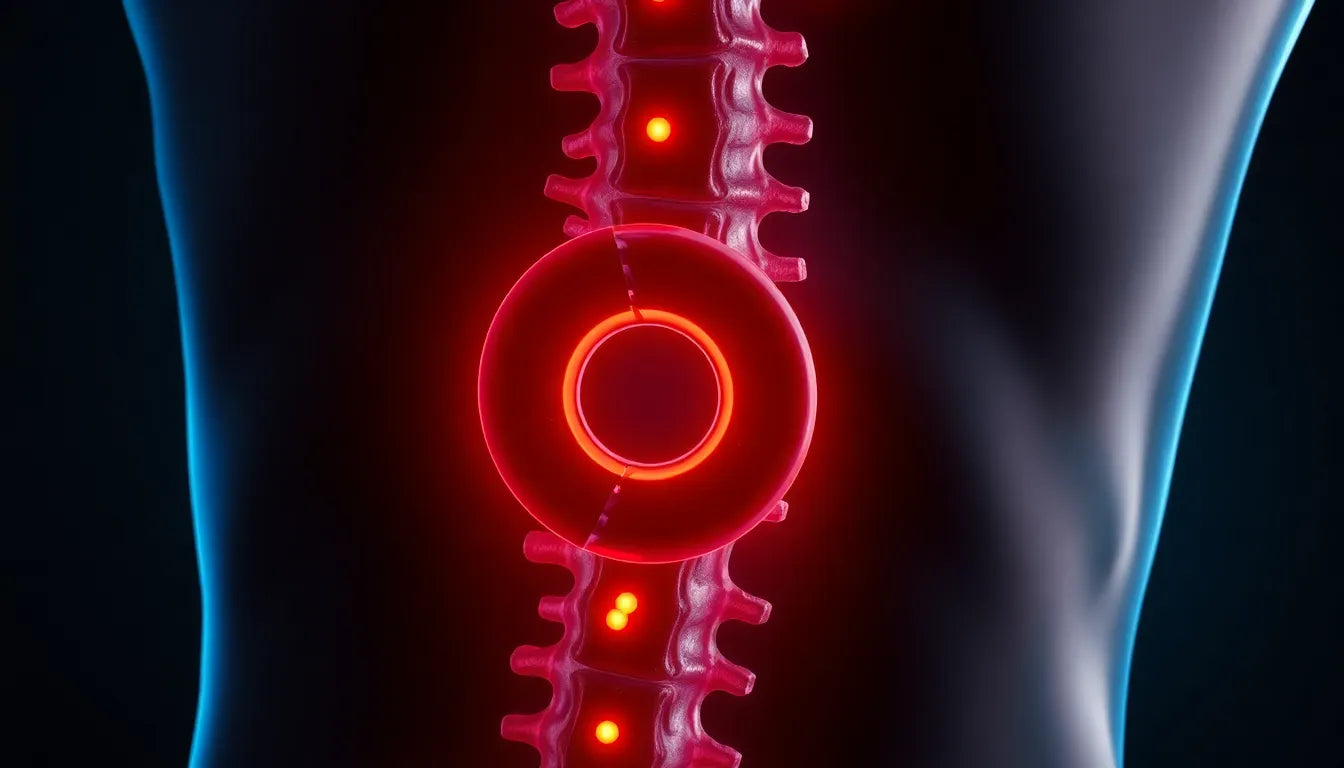Understanding the potential benefits of swimming for those suffering from a herniated disc begins with a clear grasp of what this condition entails. A herniated disc occurs when the soft inner gel of a spinal disc pushes through a tear in the tougher exterior casing. This can result in irritation or compression of nearby nerves, leading to symptoms such as pain, numbness, or weakness, particularly in the lower back and legs. These symptoms can significantly impact daily activities, from simple movements to more strenuous tasks, thereby reducing one's quality of life.
the role of exercise in recovery
Maintaining physical activity is crucial for spine health, even when dealing with a herniated disc. While it might seem counterintuitive to exercise when experiencing back pain, engaging in the right types of physical activity can promote healing and prevent further injury. Exercise helps by improving flexibility, strengthening muscles that support the spine, and enhancing overall physical function. Among various forms of exercise, swimming stands out as a particularly beneficial activity for individuals with herniated discs.
Swimming is a low-impact exercise that offers a unique combination of cardiovascular and strengthening benefits without placing undue stress on the spine. The buoyancy of water supports the body, reducing the pressure on the spine and joints, allowing individuals to perform movements that might be painful or difficult on land. This makes swimming an ideal therapeutic exercise for those recovering from a herniated disc.
the healing power of water
The therapeutic potential of swimming for herniated disc sufferers lies in the healing power of water. Water's natural buoyancy reduces the gravitational pull on the body, which can alleviate pressure on the herniated disc and surrounding nerves. This environment not only eases pain but also encourages gentle movements that can enhance flexibility and strength. Furthermore, the resistance provided by water helps in building muscle strength, which is essential for supporting the spine and preventing future injuries.
In the following sections, we will delve into the scientific evidence that supports swimming as a beneficial exercise for herniated disc recovery. We'll explore how swimming can reduce inflammation, increase circulation, and offer a gentle yet effective way to strengthen the muscles that stabilize the spine. Stay tuned as we uncover practical advice and insights into how swimming can be incorporated into a holistic recovery plan for those dealing with herniated discs.
scientific backing for swimming benefits
Research has consistently highlighted the advantages of swimming for individuals with herniated discs. A notable study found that swimming significantly reduces inflammation and nerve pain, particularly in cases of lumbar disc herniations. This is crucial because inflammation is a primary source of discomfort in herniated disc sufferers. Additionally, swimming has been shown to provide relief for lower back pain, a common symptom associated with herniated discs.
mechanism of benefits: buoyancy and joint pressure
The buoyancy of water plays a pivotal role in alleviating the pressure exerted on joints and spinal discs. When submerged, the body experiences a reduction in gravitational force, which decreases the stress on the spine. This allows individuals to perform exercises that would otherwise be painful on land, promoting recovery without exacerbating the condition.
circulation and healing
Swimming also enhances circulation, which is vital for healing damaged tissues. The gentle movement and resistance provided by water stimulate blood flow, delivering essential nutrients and oxygen to the affected areas. This increased circulation can accelerate the healing process, reduce swelling, and alleviate pain associated with herniated discs.
muscle strengthening
The aquatic environment offers natural resistance, which is beneficial for muscle strengthening. Engaging in swimming helps to build and tone muscles that support the spine, providing better stability and reducing the likelihood of future injuries. Strengthening these muscles is crucial for individuals with herniated discs, as it aids in maintaining proper posture and spinal alignment.
specific benefits for herniated discs
Swimming offers unique benefits specifically tailored to the needs of those with herniated discs. It helps to ease the strain on the affected discs, allowing for improved mobility and reduced pain. The buoyancy of water not only alleviates pressure but also boosts blood flow to the damaged areas, enhancing the body's natural healing processes.
spinal decompression and gentle stretching
One of the most significant advantages of swimming is its ability to facilitate spinal decompression. The horizontal position adopted during swimming, combined with the buoyant properties of water, gently stretches the spine. This can relieve pressure on nerve roots, offering substantial pain relief. Additionally, swimming promotes gentle stretching of the spine, which can help in decompressing the lumbar region, a common site for herniated discs.
practical exercise guide
For those looking to incorporate swimming into their recovery routine, certain techniques and exercises can maximize benefits. Recommended swimming strokes include the backstroke and freestyle, as they are less likely to strain the back. These strokes allow for a full range of motion while maintaining a neutral spine position.
In addition to traditional swimming, incorporating aquatic exercises such as water walking or gentle aqua aerobics can complement the benefits of swimming. These exercises provide additional opportunities to strengthen the core and back muscles, further supporting spinal health.
By understanding and utilizing the specific benefits of swimming, individuals with herniated discs can find relief and improve their quality of life. In the next section, we will explore expert insights and compare swimming with other low-impact exercises, providing a comprehensive view of its role in herniated disc recovery.
Expert insights and comparisons
Physical therapists and spine specialists often advocate for swimming as a highly effective exercise for those dealing with herniated discs. According to Dr. Emily Larson, a renowned spine specialist, "Swimming provides a unique environment where patients can exercise without the fear of exacerbating their condition. The buoyancy of water supports the body, allowing for movements that are otherwise challenging on land." Such expert validations highlight the importance of incorporating swimming into rehabilitation programs for herniated disc sufferers.
When comparing swimming with other low-impact exercises, its distinct advantages become evident. Unlike walking or cycling, swimming offers a full-body workout while minimizing the impact on the spine. The water's resistance helps in muscle strengthening, while its buoyancy reduces joint stress, making it superior in terms of reducing pain and facilitating recovery. Additionally, swimming allows for a greater range of motion, which is beneficial for spinal mobility and flexibility.
Frequently asked questions
Is swimming safe for all types of herniated discs?
Swimming is generally safe for most individuals with herniated discs due to its low-impact nature. However, it is essential to consult with a healthcare provider before starting any exercise regimen, especially if you have severe symptoms or other medical conditions. A professional can provide personalized advice and ensure that swimming is suitable for your specific situation.
How often should someone with a herniated disc swim?
For optimal benefits, individuals with a herniated disc should aim to swim two to three times per week. Each session can last between 20 to 40 minutes, depending on personal endurance and comfort levels. It's crucial to start slowly and gradually increase the duration and intensity of the sessions as your body adapts.
What are the best swimming strokes for herniated disc relief?
The backstroke and freestyle are recommended for those with herniated discs, as these strokes minimize strain on the back. They allow for a full range of motion while maintaining a neutral spine position, which is crucial for avoiding additional stress on the affected area.
Can swimming replace other forms of therapy for herniated discs?
While swimming is an excellent form of exercise for herniated disc recovery, it should not replace other therapies prescribed by your healthcare provider. Swimming can be part of a comprehensive treatment plan that includes physical therapy, medication, and other recommended practices to ensure a well-rounded recovery approach.
Are there any precautions to take when swimming with a herniated disc?
When swimming with a herniated disc, it's important to maintain proper form to avoid exacerbating the condition. Focus on smooth, controlled movements and avoid sudden twists or jerks. Consider using swimming aids like kickboards or floatation devices to support your body and enhance your technique. Always listen to your body and stop if you experience any pain or discomfort.
By integrating swimming into your recovery plan, you can leverage its unique benefits to alleviate symptoms and improve your quality of life. With expert guidance and a commitment to a suitable exercise routine, swimming can be a valuable tool in managing herniated disc symptoms effectively.
```html
Sources
- DISC Spine Institute. "Swimming and Herniated Discs: Benefits and Exercises."
- HydroWorx. "Hydrotherapy Benefits for Herniated Discs."
- SwimEx. "Aquatic Therapy Exercises for Lumbar Disc Herniation."
- Hinge Health. "Swimming for Back Pain: Expert Insights."
- SAPNA Medical. "Swimming for Herniated Disc Recovery: Benefits and Mechanics."


















